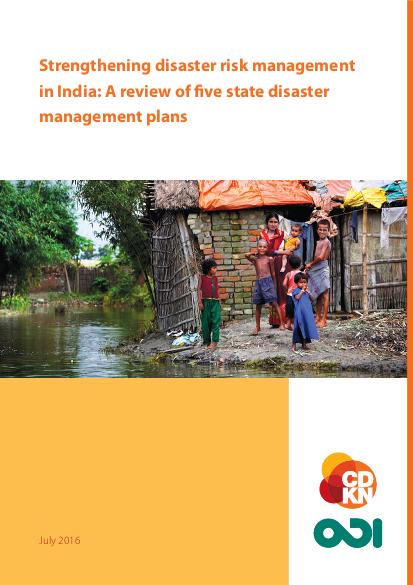
India has suffered from many disasters in its recent history, both natural and climate-related, and these continue to cause devastation. From 2002 to 2013, India was among the five countries most frequently hit by natural disasters. These included the Indian Ocean Tsunami in 2004, which caused around 11,000 deaths and affected 2.79 million people in India, and the 2013 floods in Uttarakhand, which caused 5,748 deaths and affected 4,200 villages. Before this, India’s major disasters included Cyclone Paradip in 1999, which caused around 10,000 deaths. According to the World Risk Index 2014, India is in the top half of all countries at risk from natural hazards and, more importantly, for many years it has severely lacked the capacity to cope with and adapt to these hazards. This is one reason why India’s national and state governments have taken major steps towards putting legislation, plans and policies in place to deal with disaster risk.
The Disaster Management Act of 2005 provided a robust policy framework for dealing with natural hazards. Since then, many states and union territories have developed state disaster management plans (SDMPs). Furthermore, 80% of the country’s districts have created district disaster management plans. Together, these policies guide the actions of several institutions, including the National Disaster Management Authority, the National Institute of Disaster Management, the Union Ministry of Home Affairs, the state disaster management authorities and the district disaster management authorities.
These policies have already proven effective in helping India to deal with disasters. Despite this and other successes, however, there is room to further strengthen the policy architecture for disaster risk management in India. As the primary responsibility for dealing with disasters lies with state governments, the key operational policies that guide disaster risk management actions across the country are the SDMPs.